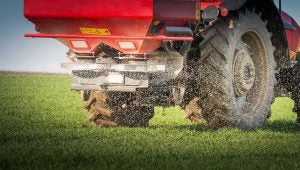Money talks, and what producers spend their money on drives modern agriculture. Producers purchase inputs based on what they feel are the needs of their soil and crops. They determine those needs by sampling and testing both soil and plants, studying yield maps, personal experience, plant-tissue testing, and other current technologies to fine tune their systems of crop production. This is all based on time-tested methods that match inputs to a crop yield response. A proven process of successful soil and plant management.
Or is it?
Depending upon the health of a given soil, the need for producer-purchased inputs can vary dramatically. Healthy, functioning soils require a fraction of the inputs of dysfunctional soil. Our current revered process of soil and plant management was developed around dysfunctional soil and the corresponding inputs that will generate yields on those dysfunctional soils.
Think about it. By the time modern input-based agronomy (built on soil testing and fertilizer applications to achieve a given yield response) was developed, the soils we were testing had already been severely degraded by decades of tillage and erosion.

As a result, we have for some time regarded dysfunctional soil as “normal.” If a person is unhealthy, we seek to restore them to full health and capacity to function. If the engine in a tractor is running poorly, we seek to restore it to full horsepower. When something is not functioning to its full potential, we refer back to the source of how that thing was originally designed to function in order to restore it. Except for the soil. We continue to overlook poorly functioning soil as a problem because we have come to accept it in its current state of disrepair. We have since built all of our agronomic practices around that standard of dysfunctional soil. Because we have not recognized the need to restore the capacity of the soil to function, it continues to decline, requiring ever-increasing inputs to make up the difference.
Because the paradigm of managing dysfunctional soil by applying inputs has enveloped the entirety of agriculture, it seems that no one can see the way out. Without a great awakening and corresponding paradigm shift, the insidious decline of our soil and rural economies will continue. Because most producers are ignorant of how fully functioning soil should perform, the paradigm persists.
Agricultural research in the interest of helping producers is currently focused on managing dysfunctional soil with inputs, often funded by an agricultural industry that sells those inputs to farmers. So, the paradigm persists, with producers footing the bill as they try to prop up soils that continue to decline. Regrettably, this is a death spiral for farmers. Some will get bigger before they get out, but the downward spiral is the same.

While the current systems of modern agronomy strive to satisfy the demands of producers to meet their crop yield goals, only a small minority of producers are aware that restoring their soils to a higher level of functionality is the real issue they face if they are to stay in business.
Those few enlightened producers are working their way toward a goal of restoring the capacity of their soils to function while becoming more profitable at the same time. Crop yield has never been a good metric for success. Profitability, while restoring soil health, might be a better way to measure success in agriculture.
I believe that an awakening of the urgent need to restore our soils must come from producers. It is producers that determine where the money will flow; not only to produce each crop, but for research that will help them restore their soil and become more profitable. I encourage producers to begin, or continue, to educate themselves on restoring the health of their soils, then set themselves on a path that will make it happen. What they spend their money on to achieve a restoration of both their soil and their profits will hopefully bring the folks in agricultural research and industry along that same path as well.
Jon Stika is a retired Natural Resources Conservation Service soil health instructor and current part-time professional at the North Dakota State University Dickinson Research Extension Center. He is also the author of “A Soil Owner’s Manual: How to Restore and Maintain Soil Health.”



